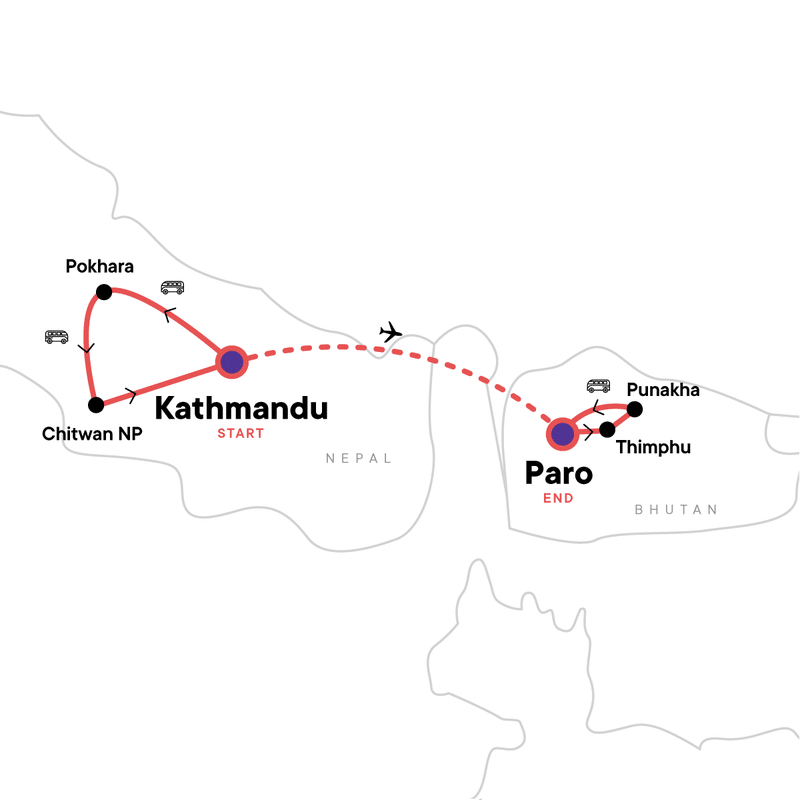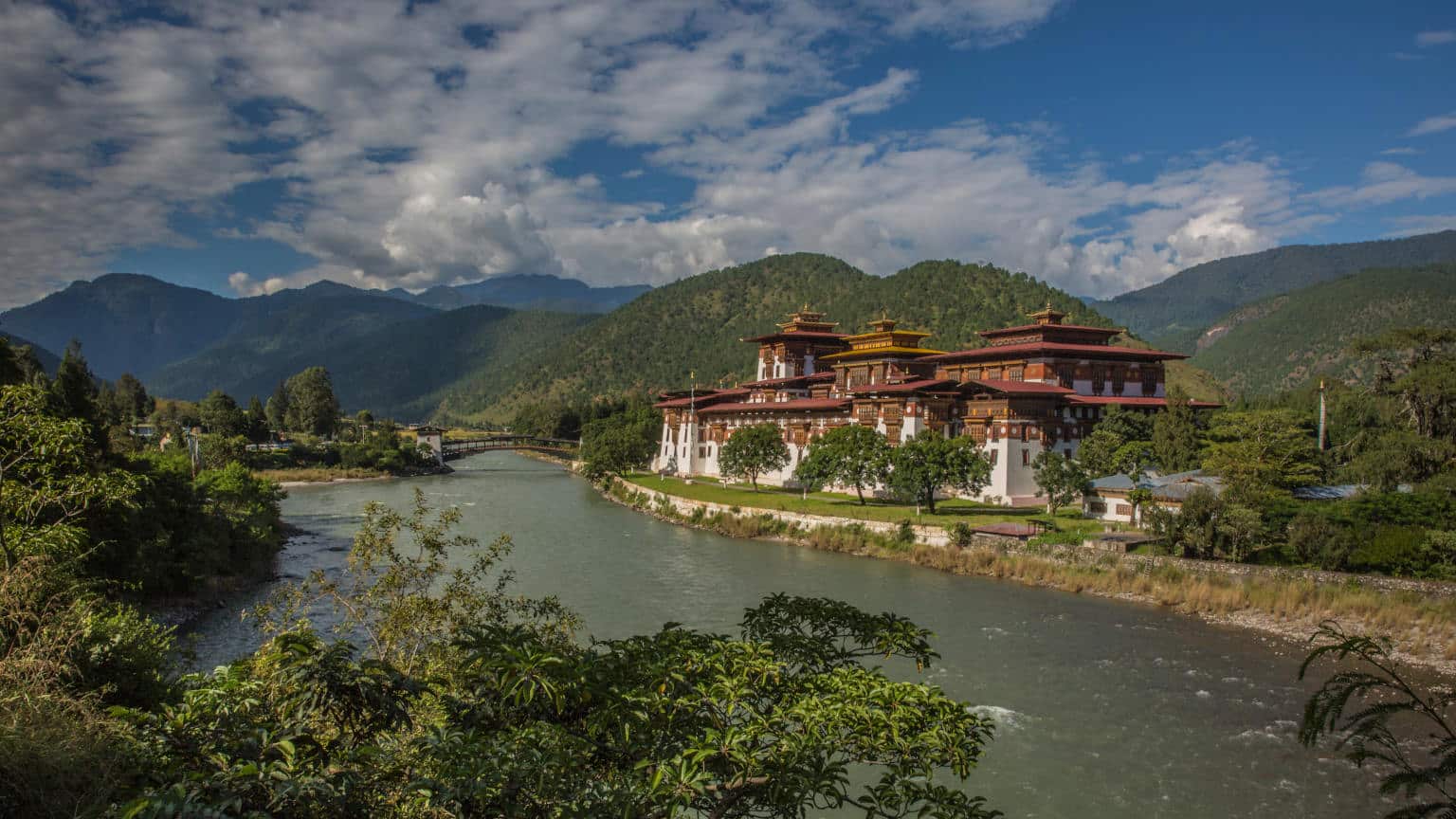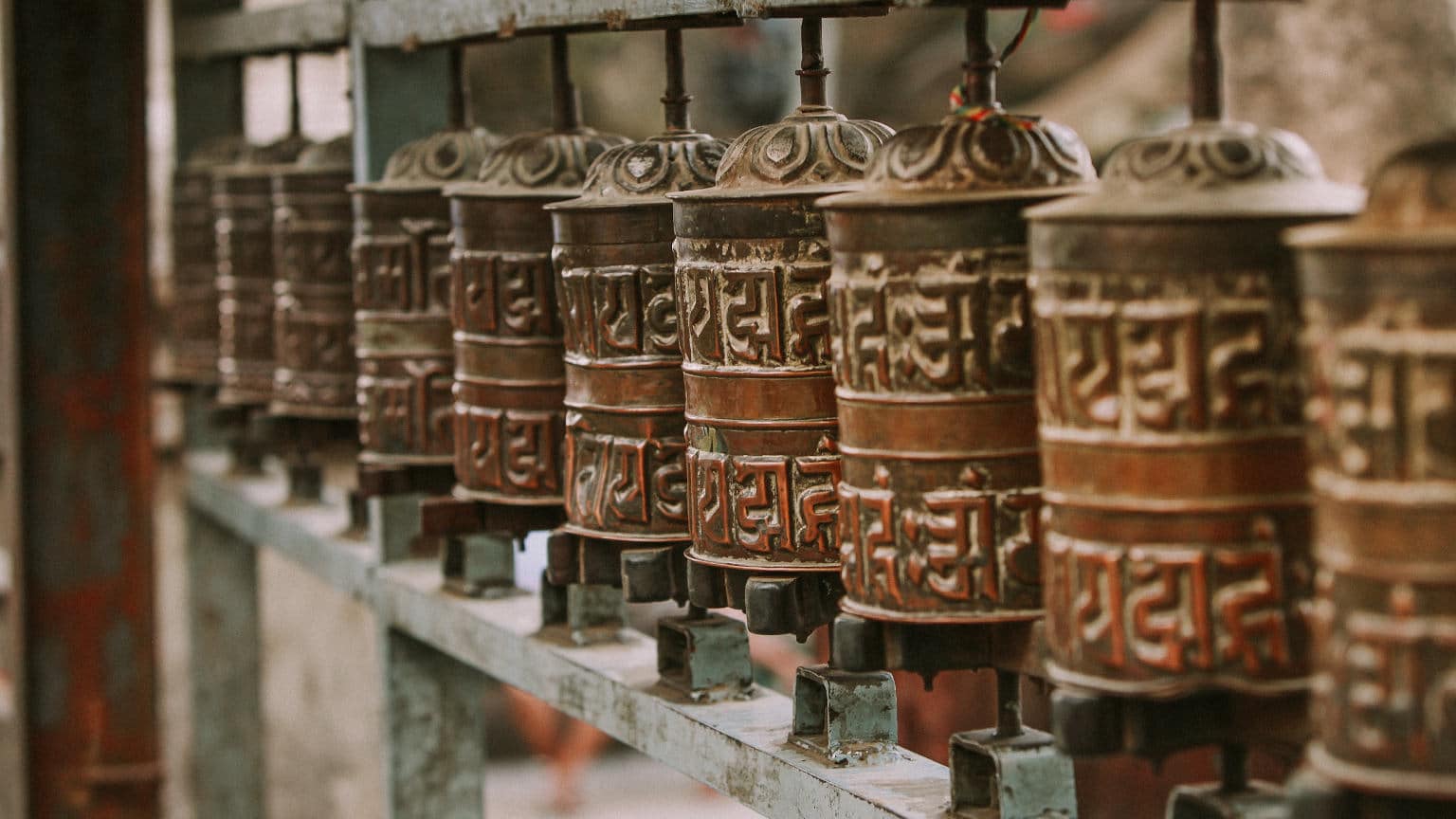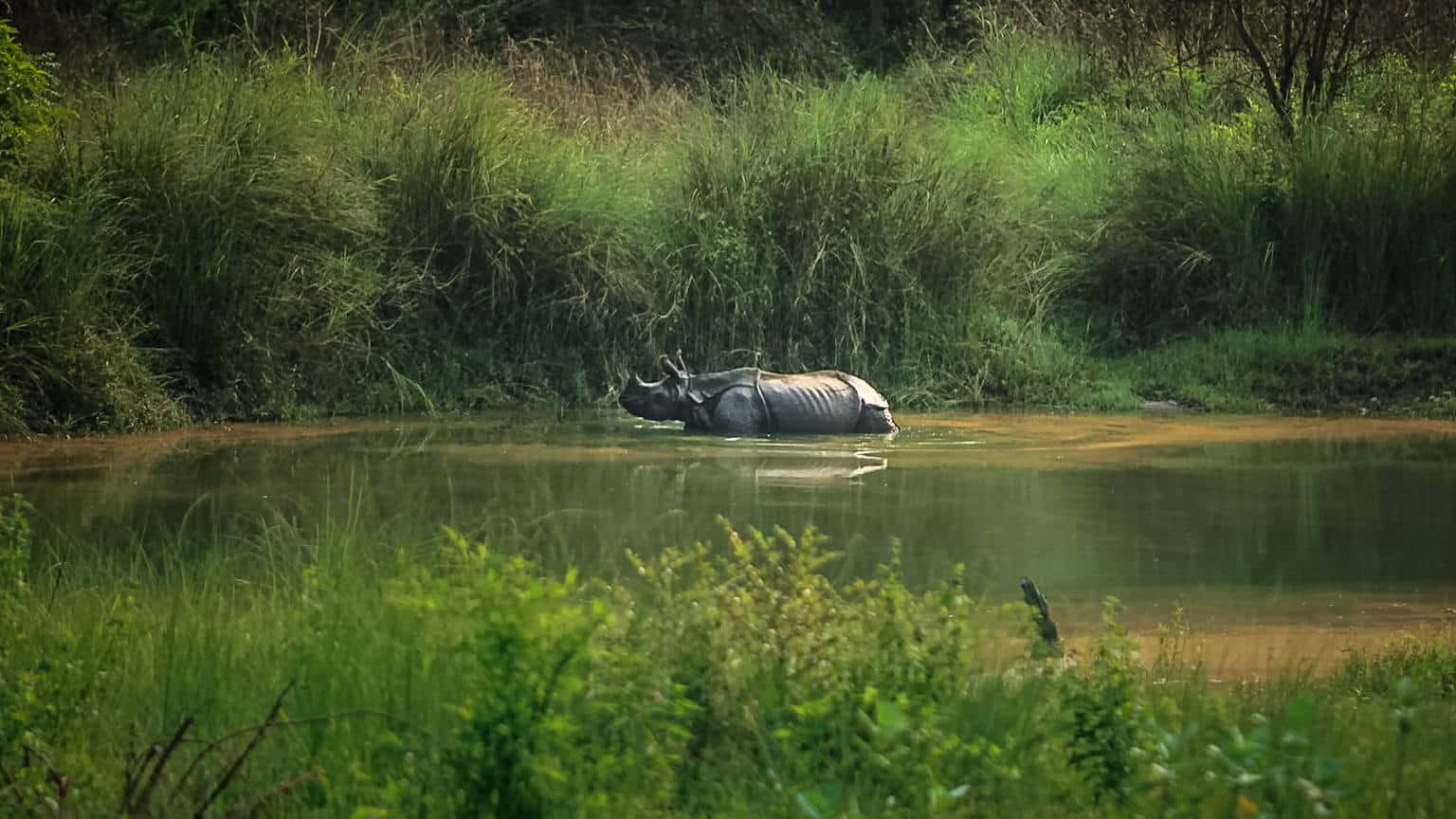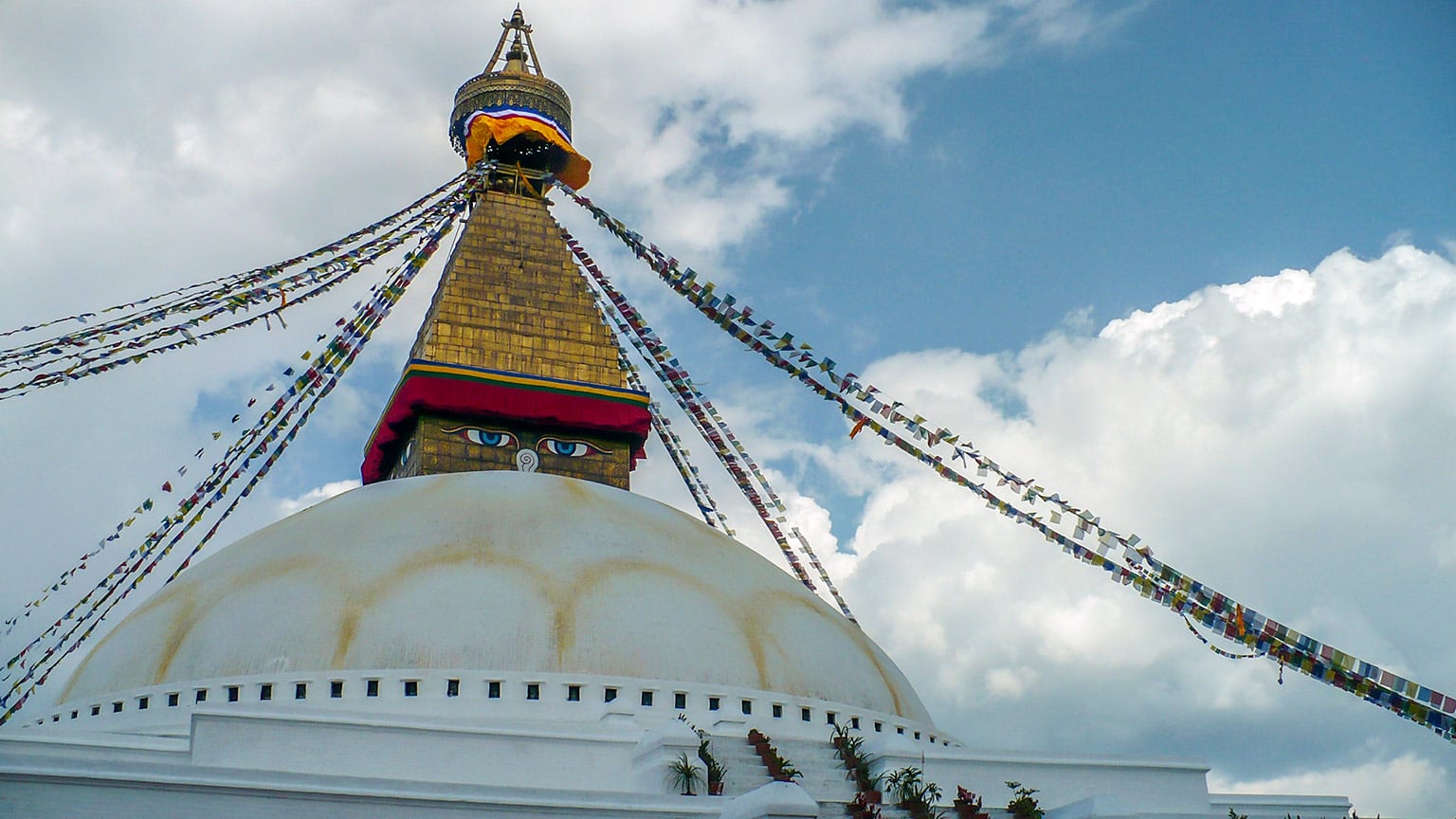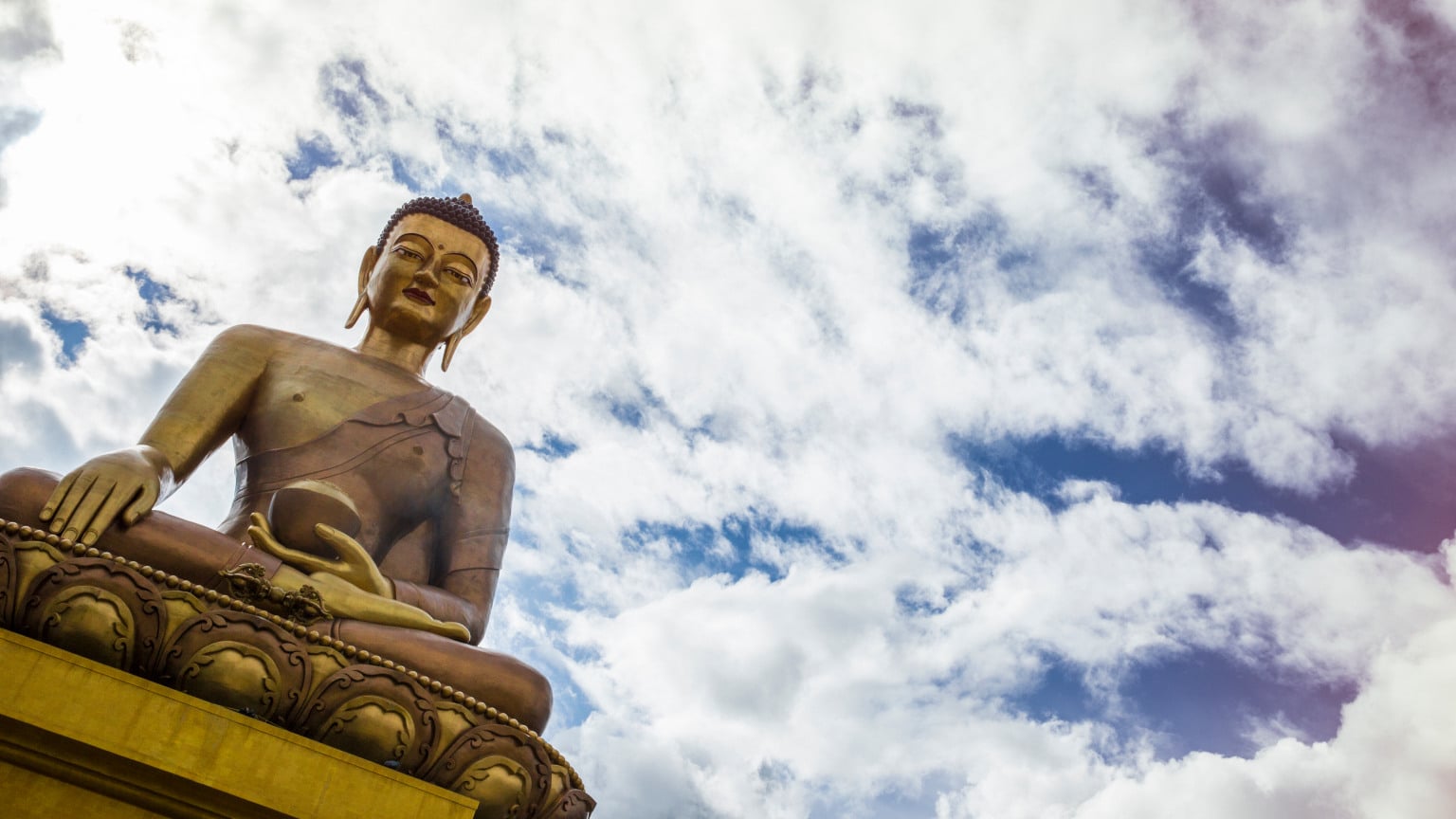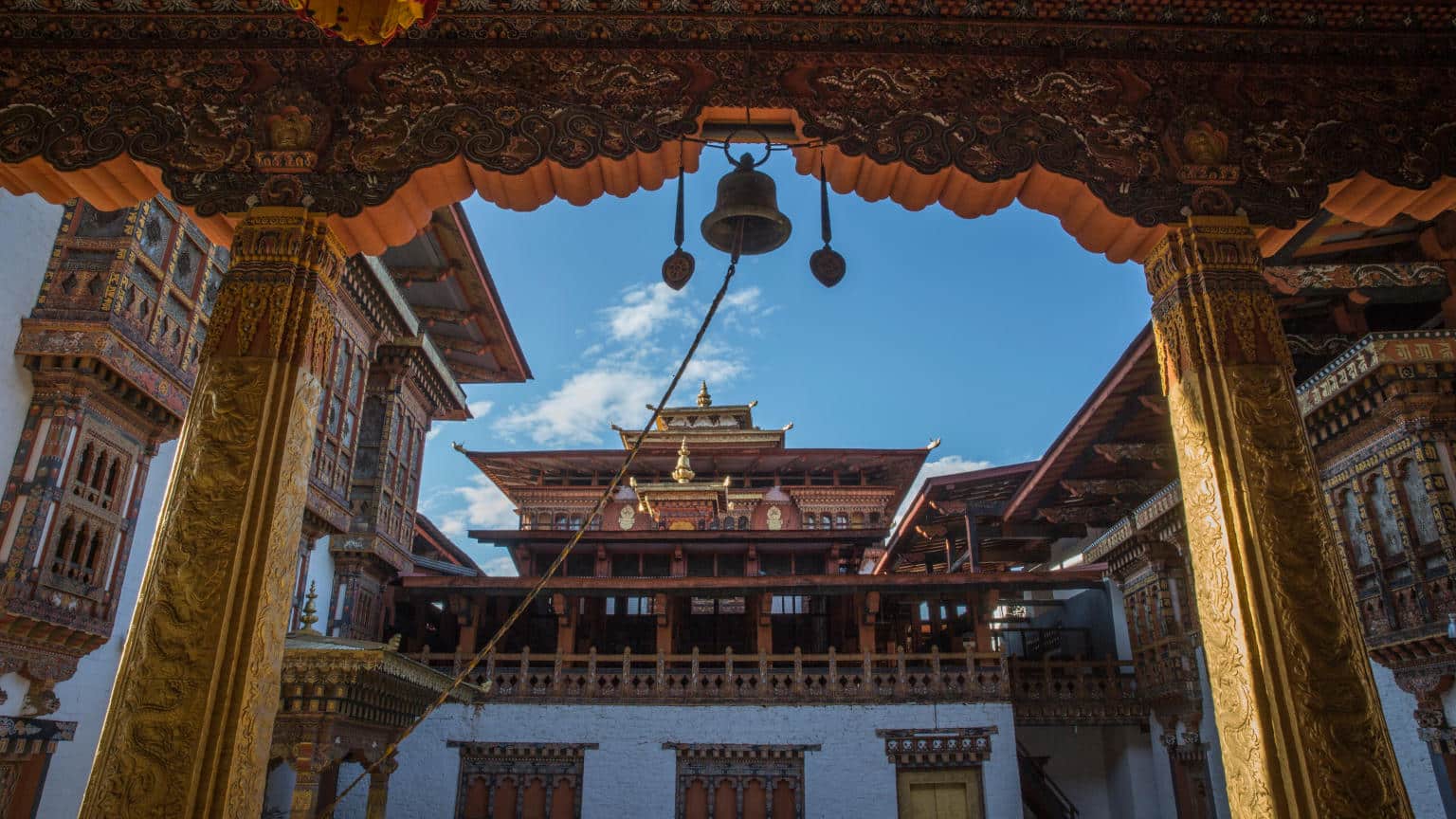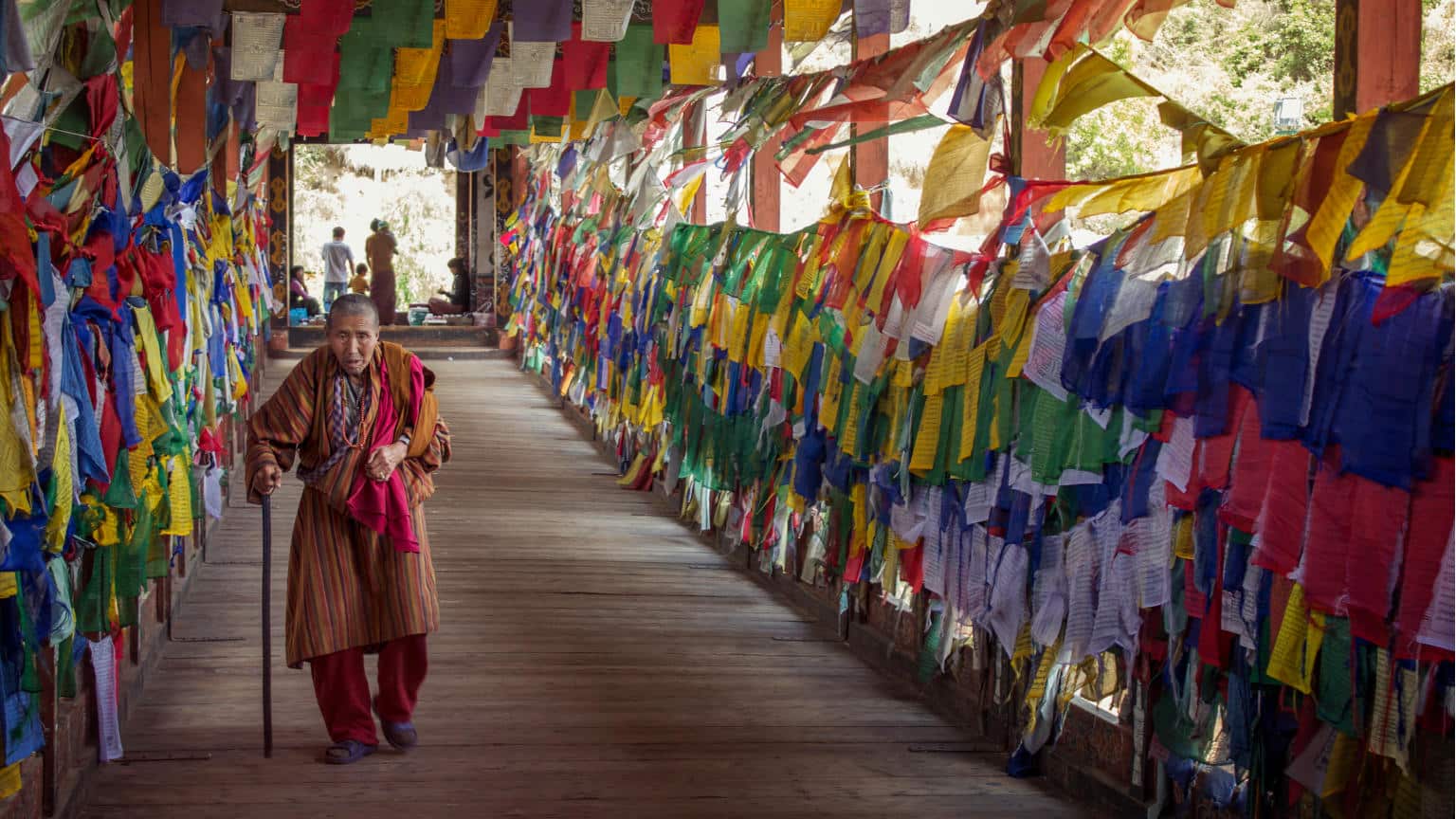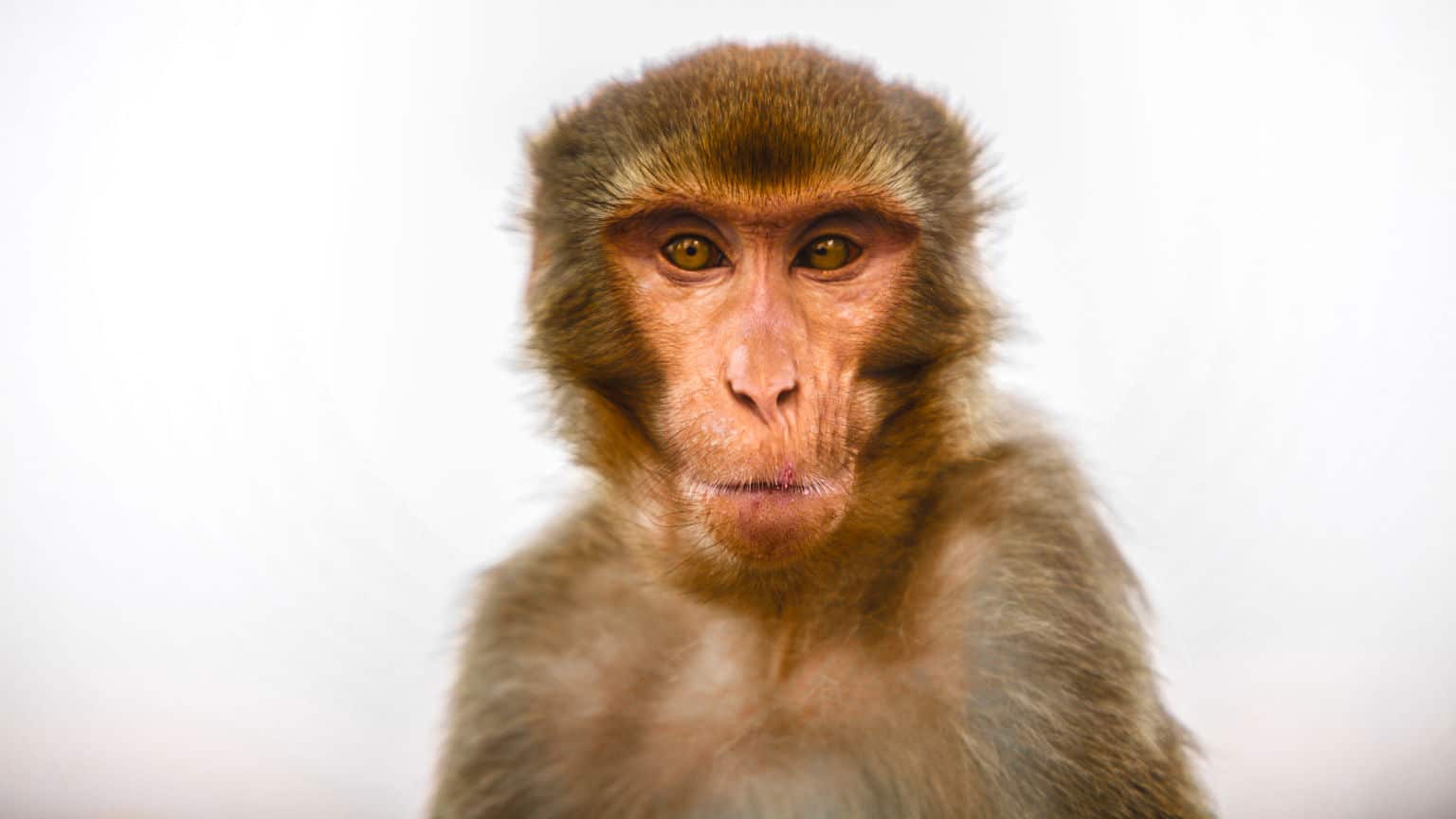Details
Frequently Asked Questions
Please read our general
FAQs, where you can find essential information that applies to all of our programs.
Resources to Learn & Teach about Bhutan & Nepal
Visit our
recommended reading page to see the list of books GEEO recommends reading before your program (this is not required reading). We also have
lesson plans and
Pinterest boards that may be useful for you as you learn about your destination and prepare to bring lessons back to your classroom.
Terms and Conditions
It is very important for you to visit our
Terms and Conditions page before signing up for this program.
GEEO Program Confirmation Process
Most GEEO programs are officially confirmed to run once 4 participants have registered. If at least 8 people sign up by our designated deadline, the program will run as a private GEEO trip. Should enrollment fall between 4 and 8, the trip will still take place, but it may transition into a
shared departure with our partner tour operator, G Adventures. In this scenario, the itinerary, dates, and pricing for those who have already registered will remain unchanged, although additional travelers from outside GEEO may join the trip.A large majority of GEEO programs remain private for just educators, retired educators, and their guests. We encourage you to sign up for any program that interests you, and we’ll keep you updated throughout the process—first when 4 participants have registered and again once 8 people have signed up. As always, we recommend exercising caution when making non-refundable travel arrangements (for example, booking flights with flexible change or cancellation policies) until your program is confirmed to run.
Cancellation Policy
Below is the cancellation policy for most GEEO programs and participants.
(Exception for participants who receive grants from our university partners: To address disruption caused by cancellation from grant recipients, deposits paid by grant recipients are forfeited upon cancellation.)
- If you cancel 90 days or more before your program begins, your $350 deposit will remain on file for future use and never expires. Any additional payments you have made will be refunded.
- If you cancel between 30 and 89 days before your program begins, your $350 deposit will remain on file for future use and never expires. You will also receive 50% of your remaining program cost as a travel credit; alternatively, you can request a refund of the travel credit, minus a 2% administrative fee. The other 50% of your remaining balance will be forfeited as a cancellation fee.
- If you cancel within 30 days before your program starts, your $350 deposit will remain on file for future use and never expires. The remaining balance of your program cost will be forfeited as a cancellation fee.
Please submit your cancellation request in writing via email to travel@geeo.org. If you do not receive a confirmation that we have received your written cancellation request, please call us at +1 347-433-6674.
Trip Notes & Expectations
Before you decide to travel with GEEO, it is important that you read all of the information about the program contained on this page. Our programs are quite adventurous, and we find that clients who read the trip details in full are happier with their experiences.
- ACCOMMODATION: Our program fees are based on double-occupancy accommodation (see "Single Travelers" below if you do not have a travel companion and would be interested in a private room). Our accommodations are chosen to provide a safe, conveniently located place to sleep. While you may be pleasantly surprised, please don't expect luxury, as we prioritize keeping our programs affordable. Water and electricity can be sporadic.
- TRANSPORTATION: We use a private vehicle that gets our guests from location to location safely. Sometimes you will have full days of transportation as this trip covers a lot of ground. Transportation will often be an adventure in itself.
- DRONES: Please note that drones and the flying of drones are prohibited in Nepal and Bhutan. If you violate these regulations, the police may take you into custody.
- BHUTAN TOURISM RULES: Bhutan has unique tourism rules meant to limit visitor impact. Your program price covers the required Sustainable Development Fee (SDF), visa, licensed guide, transport, and approved accommodation for the scheduled Bhutan trip days. We highly recommend booking any post-trip nights through us (rather than directly) to avoid any unexpected issues or complications related to these rules.
- LUGGAGE: You must be able to easily carry or roll your luggage, so do not over-pack.
- MEALS: Most meals in Bhutan are included in the cost of the trip – some are in the accommodation where it is the best quality/availability option. Most meals are served buffet-style with a selection of traditional Bhutanese food, some western-style (often pasta), as well as some Chinese. Fresh local vegetables are in abundance, and while Bhutan is mostly vegetarian, there usually is one meat dish available (on some occasions, there can be shortages, as all meat is imported from India). We recommend always carrying snacks with you. Meals can sometimes be far apart.
- ACTIVITY LEVEL: This trip includes some high-altitude hikes or more strenuous activities, but it is accessible to most healthy travelers. Please make sure you have thoroughly read the itinerary and can handle the group activities, which sometimes include day hikes with your daypacks.
- CAMERA RULES: Please note there may be times during your visit to Bhutan when the use of video and/or still cameras may be inappropriate. You cannot take pictures or videos inside temples. Local people may consider that filming is too intrusive, and in these circumstances, we will request that you do not film. At all times, be aware and sensitive to the impact of photography, and seek permission before taking photographs of people and respect their wishes if they refuse.
- DOGS: There are barking of dogs at night, which can be annoying. It’s advisable to bring earplugs.
- CLOTHES: Bhutan is very conservative and you should dress accordingly. As a general guideline, shoulders and legs should be covered at all times. The wearing of shorts is not allowed (except while hiking), as it will restrict your entry into buildings of a religious nature and family homes. A water and windproof jacket is useful and a hat and sunscreen essential. Due to the altitude, it can be cold in the mountains even in the summer.
- ARRIVAL/DEPARTURE FLIGHTS: Your flights out of Paro, Bhutan, must be booked by you online directly through either of the two airlines that fly out of Paro. See the "Flights" section below for more info.
- KATHMANDU-POKHARA FLIGHT: The drive from Kathmandu to Pokhara is long, and the road is curvy and can be rough. If you prefer a smoother journey and want to avoid the bus ride, you can upgrade to a flight from Kathmandu to Pokhara for $133. This flight will need to be arranged in advance.
- EXTRA NIGHTS: If you are planning to extend your stay in Bhutan, post-tour accommodation MUST be booked through GEEO in order for us to issue a valid visa for the duration of your stay. These extra nights will include a guide and meals in addition to the accommodation.
- TOUR LEADER: Please make sure you understand the role of your tour leader on this trip. All GEEO/G Adventures group trips are accompanied by one of G Adventure's group leaders, which they refer to as Chief Experience Officers (CEO). The aim of the group leader is to take the hassle out of your travels and to help you have the best trip possible. They will provide information on the places you are traveling through, offer suggestions for things to do and see, recommend great local eating venues, and introduce you to our local friends. While not being guides in the traditional sense, you can expect them to have a broad general knowledge of the countries visited on the trip, including historical, cultural, religious, and social aspects. We also use local guides where we think more specific knowledge will add to the enjoyment of the places we are visiting – we think it’s the best of both worlds.You will have different tour leaders in Nepal and Bhutan. The Nepalese guide will help get you into the airport in Kathmandu, and the Bhutanese tour leader will pick you up as soon as you exit the airport in Paro.
Single Travelers
Half of GEEO’s participants travel by themselves, so please don’t worry if you do not have a travel companion for your trip. Our program fee is for one traveler in double-occupancy accommodation, and GEEO can find you a roommate of the same gender if you do not have a travel companion. Most of our programs have a “My Own Room” option, also known as a “Single Supplement,” which is an extra fee that you can pay to have a room to yourself. You will only incur an additional charge if you specifically request a single room. To see the price for the “My Own Room” option, please find your program on our
extra services page. If you want to room alone, please email
travel@geeo.org to request a single room.
Emergency Contacts
Should you need to contact G Adventures during a situation of dire need, it is best to first call their local G Adventures office. If for any reason you do not receive an immediate answer, please leave a detailed message and contact information so they may return your call and assist you as soon as possible.
G Adventures Local Office (Delhi)
G Adventures South Asia Manager, Rishab (Delhi, India)
Emergency number:
From outside of India: +91 99 7179 5447
From within Delhi: 99 7179 5447
From within India, but outside Delhi: 099 7179 5447
G Adventures Asia Office in Bangkok (If for some reason you can’t reach any of India emergency numbers)
8:00 a.m.-6:00 p.m. CST (GMT +7)
Tel: +66 2 252 6642
If for any reason you are unable to reach the G Adventures local office, please call the numbers listed below to connect with their Sales team, who will happily assist you.
Toll-free, North America only: 1 888 800 4100
Calls from UK: 0344 272 0000
Calls from Germany: 0800 365 1000
Calls from Australia: 1 300 796 618
Calls from New Zealand: 0800 333 307
Outside North America, Australia, New Zealand, Germany and the UK: +1 416 260 0999
If your call is specifically concerning Airport Transfer complications, please call the local transfer provider directly:
From outside India: +91 9278708888
From within Delhi: 9278708888
From outside Delhi: 09278708888
Packing List
Please
read this article on GEEO’s blog for our staff’s suggestions on the best gear to pack for your upcoming travels. You must be prepared to carry your own bags and be comfortable carrying them up and down stairs, on and off transportation, and to hotels. As a rule, we try not to have to walk more than 15-20 minutes with your bags, which is why we recommend keeping the weight of your bags between 22-30 lb. Most travelers carry a backpack or rolling bag of small to medium size. No XXL bags please! A daypack is also essential for carrying everyday items. Space is limited on transportation, so there is a limit of one main piece of luggage per person plus a daypack per person.
Suggested (click to expand)
- Clothes for religious sites – knees and shoulders must be covered
- Raincoat and/or umbrella
- Personal clothing for mild to warm weather – we recommend packing 8-9 days of outfits, so you only have to do laundry once; covering shoulders is advisable
- Shorts
- Long, lightweight pants (for when it is both warm and you need to cover your legs to enter a religious site)
- Light fleece top (it can get a bit cold at higher altitudes and on flights)
- Sturdy walking shoes – closed toe is a good idea
- Daypack
- Insect repellent
- Sunblock
- Sunglasses
- Sun hat
- Watch or alarm clock (or use your phone)
- Toiletries – your hotels will have soap and shampoo
- Camera (or use your phone)
- First-aid kit, including: lip salve, aspirin, bandaids, anti-histamine, Dramamine, Imodium or similar tablets for mild cases of diarrhea, electrolyte powder, insect repellent, extra prescription drugs you may be taking
Optional (click to expand)
- Light weight silk sleep sheet (it is a great body temperature regulator, so comes in handy for a comfortable sleep)
- Travel pillow
- Money belt
- Water bottle
- Phone/tablet – all hotels have WiFi
- Chargers for electronics as well as converters/adapters, if needed
- AirTags or Tile trackers
- Packing cubes
- Earplugs
- Snacks – packing a few granola bars is a good idea; you can buy snacks when you get there too, so don’t go crazy here
- Ziplock bags for wet clothing
- Reading/writing material
- Hand sanitizer/baby wipes
- Cover for backpack or plastic bags to keep clothes dry
Documents (click to expand)
- Passport (with photocopies)
- Any entry visas or vaccination certificates required
- Travel insurance ID card
- Flight itinerary/boarding pass(es)
- USD/EUR cash
- Credit/debit card
- G Adventures vouchers
- GEEO Classroom action plans for your group – this is sent a few days before departure
Laundry
Laundry facilities are offered by some of our hotels for a charge, or you can ask your tour leader where the nearest laundromat is located. In case you want to do your own laundry, we suggest you bring your own non-polluting/biodegradable soap.
Passports and Visas
All GEEO programs require that the participant have a valid passport. Please see our general
FAQ for information on obtaining a passport. As with all of our trips, we try to provide the most accurate information we can, but governments sometimes change visa rules. It is your responsibility to double check the information we provide below by searching
the U.S. State Department's International Travel Guidance.
PASSPORT
Your passport must be valid for at least six months beyond your intended departure date from Nepal, Bhutan, and any additional countries on this trip. Ensure your passport has at least one blank page per country for entry and exit stamps.
VISA
NEPAL
U.S. citizens must have a visa to enter Nepal. Tourist visas can be obtained upon arrival at the airport; however, lines can be long. We recommend
applying in advance for your visa using this website. Apply
no more than 15 days before arrival, as older applications are deleted. You will need a digital copy of your passport bio page and a passport-style photo to submit the application. Once submitted, print or download your confirmation slip to present at the airport.
The cost is $30 USD for a 15-day visa, payable in cash only. Bring exact change in crisp $10 and $20 bills. You will pay for the visa at the airport even if you apply online in advance.
BHUTAN
U.S. citizens need a visa to visit Bhutan. Your visa will be arranged by G Adventures and is included in the program price. You will receive the visa by email prior to your arrival in Bhutan. To arrange your Bhutan visa, G Adventures requires that you submit
this form at least 35–40 days before departure.
Important: If you are planning to extend your stay in Bhutan, post-tour accommodation MUST be booked through GEEO/G Adventures in order for us to issue a valid visa for the duration of your stay.
*INDIA
If you are flying from Paro to India, please note that the Indian government has recently made some changes to visa regulations due to misuse of the tourist visa. We encourage all passengers to
research up-to-date information on entry requirements for travelers from Bhutan to India. This is especially important for any travelers planning to enter India multiple times within a two-month period, or
those who plan to check luggage during their flights out of Bhutan. Foreigners who have an Indian tourist visa and who, after initial entry into India, plan to visit neighboring Nepal, Bhutan, or Sri Lanka, and then re-enter India—all within 2 months—need to get special authorization.
Money Exchange
The local currency in Nepal is the Nepalese rupee (NPR), and the local currency in Bhutan is the Bhutanese ngultrum (BTN), although the Indian rupee is also widely accepted in both countries. As currency exchange rates fluctuate, we ask that you refer to the following website for daily exchange rates: www.xe.com. The Ngultrum (local currency) is valueless outside of Bhutan so make sure that you change back all excess Bhutanese currency before you leave.
We recommend that you obtain cash from ATMs while traveling; they will dispense the local currency. We do, however, recommend that you bring at least $200 USD in cash for emergency use or in case you have trouble with the ATMs. Major credit cards are accepted in most shops, but you may be charged an international transaction fee; ask your financial institution about their international fees. Please note that if you are carrying U.S. dollars, the bills should be in good condition (i.e., not torn, wrinkled, or marked on in any way) and dated recently.
Tipping
It is customary in South Asia to tip
service providers such as waiters, at approximately 10%, depending on the service. Tipping is an expected, though not compulsory, component of this program and an expression of satisfaction with the people who assist you on your trip. Tipping is also one of the most direct ways that you can have a positive economic impact within the local community. Although it may not be customary to you, it is of considerable significance to the people who will take care of you during your travels. Your tour leader will offer to collect the money and distribute the money to service workers throughout your trip.
Altogether these tips end up around $70 USD.
At the end of your program, if you felt your G Adventures tour leader did an outstanding job, a tip would be appreciated. The amount is entirely your personal preference, but as a guideline, $20-30 USD per person per week would be appropriate. We recommend tipping your tour leader in crisp USD bills:
$30 for your G Adventures tour leader in Nepal and
$30 for your G Adventures tour leader in Bhutan. You'll also want to budget
$20 for your driver in Nepal and $20 for your driver in Bhutan.
Vaccinations
GEEO cannot provide any medical advice, so it is very important to consult your doctor or a travel clinic about which vaccinations you will need for your trip. We recommend contacting
Passport Health, which has travel clinics located throughout the United States. You can also check the
CDC's recommended vaccinations for your destination. Please take this seriously! This trip takes place at high altitude, which is medically defined as anything over 8,000 feet (2,440 meters). Most people can travel to 8,000 feet with minimal effects. However, everyone reacts to altitude differently, and altitude sickness can affect some people irrespective of fitness and age. For details on how to best prepare and what to do in the unlikely event you are affected on your adventure, please consult your physician. None of the 15 participants in our 2022 Bhutan group had significant issues adjusting to the altitude.
Flights
We find the best prices for flights are often available around 90-120 days before departure, but of course this varies greatly from route to route and year to year.
You should wait until this trip is confirmed before you book non-refundable flights. GEEO and G Adventures bear no responsibility for any flights purchased before the trip is confirmed.
This program begins in Kathmandu and ends in Paro. Please double-check our itinerary for the date by which you must arrive in Kathmandu. You may want to arrive in Kathmandu one or more days early in case you have flight disruptions. You can arrive at any time you choose, but try to make it in time for our 6:00 p.m. Welcome Meeting on Day 1. You can depart from Paro any time on the final day of the program. Most major airlines don't offer transatlantic flights using Paro as a destination; instead, you can book a separate flight from Bhutan directly with one of these two airlines:
Druk Air or
Bhutan Airlines. Flights can be booked from Paro to Bangkok, Kathmandu, Delhi, or Kolkata (please check visa requirements if flying via India).
Plugs and Converters
There are two components to provide external power to your device: adapters and transformers (also called electrical converters). The adapter is for your device's plug, adapting the prongs on a standard U.S. two- to three-pronged power cord to fit the local outlets. The transformer/converter changes the local voltage to the voltage used in the U.S.
India and Nepal use Type G (three square prongs), C (two circular prongs), and D (three circular prongs) plugs, and the voltage is 230V. (Standard U.S. electrical outlets are 120V.) Most new devices, including phones and laptops, are made to work with the different voltage rates, but some devices, like hair dryers, may only work on the U.S. standard of 120V. Check your device's plug or manual to see what voltage range it requires. Most transformer blocks will have an “Input” line that defines its voltage capacity; for example, “Input: 100-240V” means that it will work with voltages between 100V to 240V. If your device can’t handle the higher voltage, you’ll need to purchase a transformer/converter. You can find world transformers/converters online or at many retail stores in the travel section.
Weather
In November, Nepal and Bhutan experience some of the best weather conditions of the year, ideal for travel and trekking. Temperatures are relatively mild to warm, although higher elevations can be colder, especially at night. There is very little rainfall, with generally clear skies, providing excellent visibility for mountain views.



